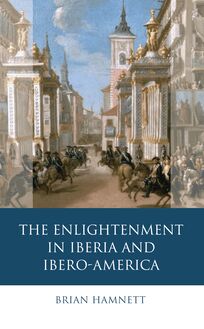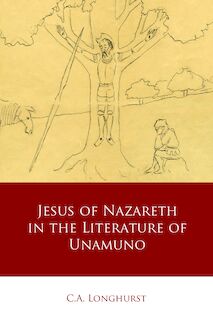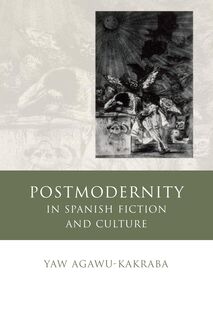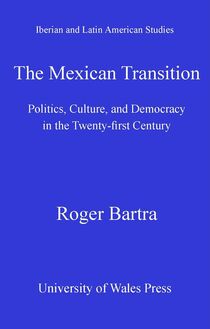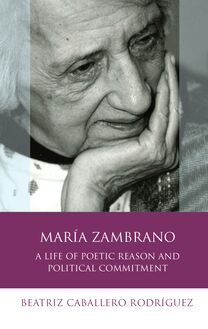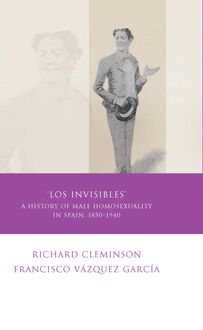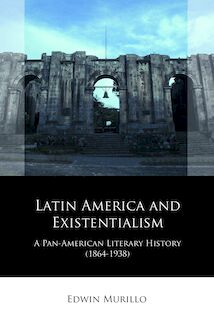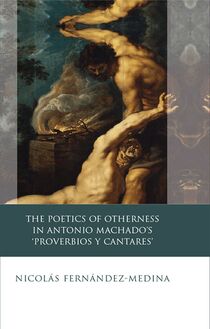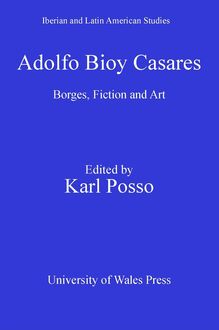-
 Univers
Univers
-
 Ebooks
Ebooks
-
 Livres audio
Livres audio
-
 Presse
Presse
-
 Podcasts
Podcasts
-
 BD
BD
-
 Documents
Documents
-
- Cours
- Révisions
- Ressources pédagogiques
- Sciences de l’éducation
- Manuels scolaires
- Langues
- Travaux de classe
- Annales de BEP
- Etudes supérieures
- Maternelle et primaire
- Fiches de lecture
- Orientation scolaire
- Méthodologie
- Corrigés de devoir
- Annales d’examens et concours
- Annales du bac
- Annales du brevet
- Rapports de stage
La lecture à portée de main
Vous pourrez modifier la taille du texte de cet ouvrage
Découvre YouScribe en t'inscrivant gratuitement
Je m'inscrisDécouvre YouScribe en t'inscrivant gratuitement
Je m'inscrisEn savoir plus
Vous pourrez modifier la taille du texte de cet ouvrage
En savoir plus

Description
This volume delivers a comprehensive study of banditry in Latin America and of its cultural representation. In its scope across the continent, looking closely at nations where bandit culture has manifested itself forcefully ― Mexico (the subject of the case study), the Hispanic south-west of the United States, Argentina, Brazil, Venezuela and Cuba ― it imagines a ‘Golden Age’ of banditry in Latin America from the mid-nineteenth century to the 1940s when so-called ‘social bandits’, an idea first proposed by Eric Hobsbawm and further developed here, flourished. In its content, this work offers the most detailed and wide-ranging study of its kind currently available.
Introduction: The Idea of a Golden Age of Latin American Banditry 1850-1950
1. The Figure of the Bandit in History, Culture and Social Theory
2. Mexico: The Myth of the Bandit Nation
3. Mexico’s Classic Bandit Narrative: Los de abajo
4. Beyond Mexico I: Bandit Cultures in Latin America
5. Beyond Mexico II: Chicano Bandit Cultures
Conclusion
Sujets
Informations
| Publié par | University of Wales Press |
| Date de parution | 02 octobre 2015 |
| Nombre de lectures | 0 |
| EAN13 | 9781783163458 |
| Langue | English |
Informations légales : prix de location à la page 0,1250€. Cette information est donnée uniquement à titre indicatif conformément à la législation en vigueur.
Extrait
Series Editors
Professor David George (Swansea University) Professor Paul Garner (University of Leeds)
Editorial Board
David Frier (University of Leeds) Lisa Shaw (University of Liverpool) Gareth Walters (Swansea University) Rob Stone (Swansea University) David Gies (University of Virginia) Catherine Davies (University of London) Richard Cleminson (University of Leeds) Duncan Wheeler (University of Leeds) Jo Labanyi (New York University) Roger Bartra (Instituto de Investigaciones Sociales, UNAM, México)
Other titles in the series
The Mexican Transition: Politics, Culture and Democracy in the Twenty-first Century Roger Bartra
Adolfo Bioy Casares: Borges, Fiction and Art Karl Posso
Barcelona: Visual Culture, Space and Power Helena Buffery & Carlota Caulfield
From Silver Screen to Spanish Stage: The Humorists of the Madrid Vanguardia and Hollywood Film Stuart Nishan Green Modern Argentine Poetry: Exile, Displacement, Migration Ben Bollig
Catalonia: National Identity and Cultural Policy Kathryn Crameri
Melancholy and Culture: Diseases of the Soul in Golden Age Spain Roger Bartra
The Poetics of Otherness in Antonio Machado’s ‘Proverbios y Cantares’ Nicolas Fernandez-Medina
IBERIAN AND LATIN AMERICAN STUDIES
Revolutionaries, Rebels and Robbers
The Golden Age of Banditry in Mexico, Latin America and the Chicano American Southwest, 1850–1950
PASCALE BAKER
© Pascale Baker, 2015
All rights reserved. No part of this book may be reproduced in any material form (including photocopying or storing it in any medium by electronic means and whether or not transiently or incidentally to some other use of this publication) without the written permission of the copyright owner. Applications for the copyright owner’s written permission to reproduce any part of this publication should be addressed to the University of Wales Press, 10 Columbus Walk, Brigantine Place, Cardiff CF10 4UP.
www.uwp.co.uk
British Library CIP A catalogue record for this book is available from the British Library.
ISBN 978-1-78316-343-4 e-ISBN 978-1-78316-349-6
The right of Pascale Baker to be identified as author of this work has been asserted in accordance with sections 77 and 79 of the Copyright, Designs and Patents Act 1988.
Cover image: Mural depicting Pancho Villa on horseback, Museo de la Revolucion Mexicana, Chihuahua, Mexico © John Mitchell / Alamy
Contents
Series Editors’ Foreword Introduction: The Idea of a ‘Golden Age’ of Latin American Banditry, 1850–1950 Chapter 1: The Figure of the Bandit in History, Culture and Social Theory Chapter 2: Mexico: The Myth of the Bandit Nation Chapter 3: Mexico’s Classic Bandit Narrative: Los de abajo Chapter 4: Beyond Mexico I: From Cangaceiros to Cowboys: Latin America’s Bandit Cultures of the Nineteenth and Early Twentieth Centuries Chapter 5: Beyond Mexico II: Chicano Bandit Cultures
Conclusion
Notes
Bibliography
Series Editors’ Foreword
Over recent decades the traditional ‘languages and literatures’ model in Spanish departments in universities in the United Kingdom has been superseded by a contextual, interdisciplinary and ‘area studies’ approach to the study of the culture, history, society and politics of the Hispanic and Lusophone worlds – categories that extend far beyond the confines of the Iberian Peninsula, not only in Latin America but also to Spanish-speaking and Lusophone Africa.
In response to these dynamic trends in research priorities and curriculum development, this series is designed to present both disciplinary and interdisciplinary research within the general field of Iberian and Latin American Studies, particularly studies that explore all aspects of Cultural Production (inter alia literature, film, music, dance, sport) in Spanish, Portuguese, Basque, Catalan, Galician and indigenous languages of Latin America. The series also aims to publish research in the History and Politics of the Hispanic and Lusophone worlds, at the level of both the region and the nation-state, as well as on Cultural Studies that explore the shifting terrains of gender, sexual, racial and postcolonial identities in those same regions.
Introduction: The Idea of a ‘Golden Age’ of Latin American Banditry, 1850–1950
This book examines the cultural history of banditry in Latin America from 1850 to 1950. It takes these dates because this is the period during which the so-called social bandit, a prototype first suggested by Eric Hobsbawm (1969), proliferated on the continent, certainly in myth if not in actual recorded history. This was an era of dramatic political and social change in Latin America, when nineteenth-century wars of independence severed these colonies from their Spanish and Portuguese rulers and when the Mexican Revolution (1910–20), at the start of the twentieth century, overturned the status quo once again. During this period bandits proved to be ideal cultural vehicles through which to channel nationalism and the desire for social justice, while, paradoxically they were also cast, according to the political currents of the time, by politicians, writers, artists and filmmakers as dangerous enemies of these fragile new nation states who struck at the fabric of society and threatened to plunge these new countries back to a pre-independence state of anarchy and barbarism. However, whether friend or foe to the nation, bandits and their accompanying folklore ensured that they were at the heart of popular culture in the period 1850–1950, making this very much a Golden Age of Latin American banditry.
Latin America here is understood not geographically but more broadly to refer to those areas where Iberian colonial cultures took root and where the contemporary postcolonial situation sees a majority of Spanish-speakers still living, that is the Hispanic USA. 1 The book focuses on a range of bandit life-stories from the region, from a historical perspective, as well as a wide range of cultural representations of which the most significant are literary works in which the bandit plays a central role, with Los de abajo, The Underdogs (1915), the classic Mexican Revolution novel by Mariano Azuela, forming the nucleus of the study. The book also focuses on folkloric depictions, transmitted through oral culture: the literatura de cordel, poetry on a string, in Brazil’s northeast; the payada or song of the Argentine pampa; and the corrido or ballad in the American Southwest and Mexico, as these were an important means of mythologising the bandit in popular discourse.
The central argument of the book departs from the still lingering stereotypical view of Mexico as bandit country and shows how this myth has been forged and then extended across Latin America such that outlaws of various types – revolutionaries, rebels and robbers – have come to represent the poor, the subaltern subject in the Americas not just in the countries considered but globally. The Latin Bandit has as much popular purchase as the Latin Lover.
Using Hobsbawm’s theoretical engagement with bandit histories as the main intellectual framework, the book focuses in particular on the idea of the noble bandit, the Robin Hood figure, because this model can be said to closely apply to the countries and regions in question, in particular to the case of revolutionary Mexico, which has been chosen as a literary case study. Mexico’s bandit history and representation, peaking during the Revolution of 1910–20, foregrounds many of the hallmarks of bandit culture evident in the other Latin American nations featured. These recurring features, highlighted by the Mexican case, involve state repression leading to community identification with bandits, followed by revolutionary upheaval and a dissolving state wherein the very definition of the term ‘bandit’ is blurred to become interchangeable with that of rebel or revolutionary
Ranging across the Americas in a variety of approaches, including the detailed literary case study of Los de abajo , what emerges is the dominant idea of a Golden Age of Latin American Banditry in popular imagination as well as in popular and high cultural forms. However, what also emerges is substantial evidence that leads to the constant deconstruction of the noble bandit myth. For every noble bandit there is a nefarious other, an outlaw of a different type altogether and this myth of Mexico as a bandit nation forms the basis for Chapters 2 and 3. In identifying this other, this book substantially departs from Hobsbawm’s theories. The book also goes beyond his theories in its focus on female bandits and in doing so it provides a corrective analysis of the often overlooked role of women during the Mexican Revolution. This is crystallised in the figure of the bandit la Pintada in Los de abajo , who, it is argued, is a far more influential character than critical opinion has previously allowed for.
Parts of this work are developed from previously-published material in Vida Hispánica , 38 (The Open University, 2008), Bulletin of Hispanic Studies , 89/7 (Liverpool University Press, 2012), and Tilman Altenburg (ed.), Imagining the Mexican Revolution: Versions and Visions in Literature and Visual Culture (Cambridge Scholars Publishing, 2013); I am grateful to the publishers for their permission to reproduce.
Chapter 1
The Figure of the Bandit in History, Culture and Social Theory
Eric Hobsbawm still dominates the literature on bandit theory. His theories are developed in the companion works Primitive Rebels (1959) and Bandits (1969). These texts categorise the different types and subtypes of banditry throughout the world. The core theory that the Marxist Hobsbawm outlines in Primitive Rebels is that banditry, far from being simply a criminal activity involving robbery, outlawry and terror, is in fact a form of ‘primitive social rebellion’ (Hobsbawm, 1959: v). He stresses ‘the peculiar symbiosis between social banditry and primitive revolutionary (millenarian) movements’ (1959: vii, Preface to the Third Edition)
-
 Univers
Univers
-
 Ebooks
Ebooks
-
 Livres audio
Livres audio
-
 Presse
Presse
-
 Podcasts
Podcasts
-
 BD
BD
-
 Documents
Documents
-
Jeunesse
-
Littérature
-
Ressources professionnelles
-
Santé et bien-être
-
Savoirs
-
Education
-
Loisirs et hobbies
-
Art, musique et cinéma
-
Actualité et débat de société
-
Jeunesse
-
Littérature
-
Ressources professionnelles
-
Santé et bien-être
-
Savoirs
-
Education
-
Loisirs et hobbies
-
Art, musique et cinéma
-
Actualité et débat de société
-
Actualités
-
Lifestyle
-
Presse jeunesse
-
Presse professionnelle
-
Pratique
-
Presse sportive
-
Presse internationale
-
Culture & Médias
-
Action et Aventures
-
Science-fiction et Fantasy
-
Société
-
Jeunesse
-
Littérature
-
Ressources professionnelles
-
Santé et bien-être
-
Savoirs
-
Education
-
Loisirs et hobbies
-
Art, musique et cinéma
-
Actualité et débat de société
- Cours
- Révisions
- Ressources pédagogiques
- Sciences de l’éducation
- Manuels scolaires
- Langues
- Travaux de classe
- Annales de BEP
- Etudes supérieures
- Maternelle et primaire
- Fiches de lecture
- Orientation scolaire
- Méthodologie
- Corrigés de devoir
- Annales d’examens et concours
- Annales du bac
- Annales du brevet
- Rapports de stage
